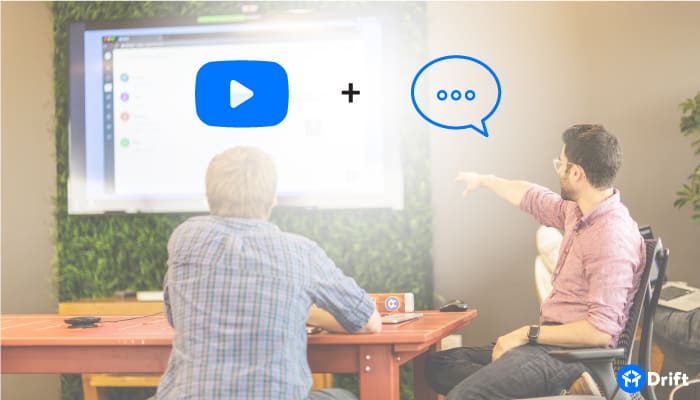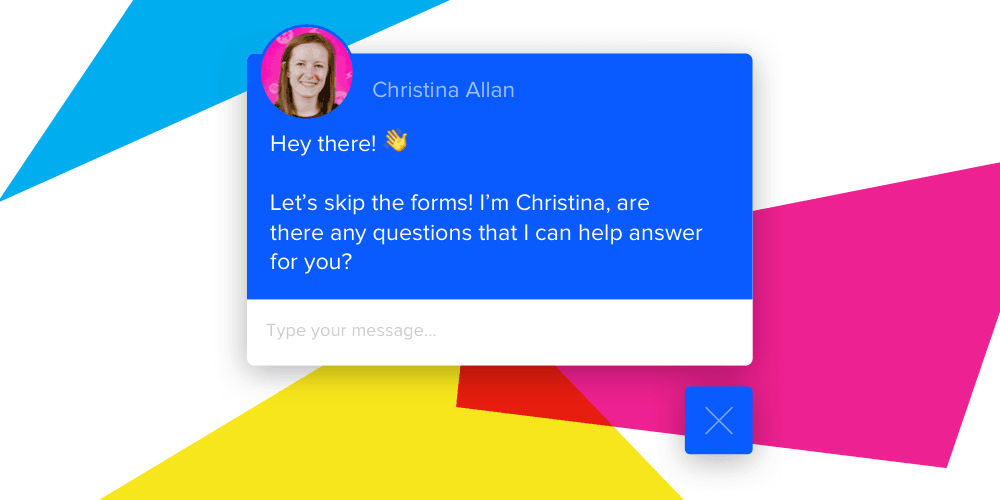
It’s 2019 and lead generation forms remain at the core of sales and marketing. In fact, 74% of marketers still rely on forms as their primary lead gen strategy.
Forms are waiting at the end of every social media campaign and paid Google ad. Want to check out this case study? Fill out a form. Get pricing info? Fill out a form. You get the idea. Marketing and sales depend on forms to fill their pipelines with leads.
So, yeah, it’s hard to break out of that mindset when everything you knew about lead generation centered around capturing information through strategically placed forms.
Forms don’t start a conversation; they’re a barrier to entry. Relationship selling and “helping over selling” are the new norm, so why are gated content and form submissions still the primary lead gen modes?
Tweet this ☝️
But not every marketer or sales manager is dead set on forms. In fact, Drift ditched forms long ago and since we’ve seen thousands of companies follow suit. Why? Because live chat conversations and conversational marketing outperform static forms over and over.
How Does Conversational Marketing Work to Capture Leads?
Okay, you’re probably used to thinking about your lead capture process like this: Design a sales funnel, link it to a series of goals and then create landing pages linked to a variety of campaigns.
Chat can instead ask qualifying questions and set up a conversation right away. Initially, the bot might present a guide, blog post, or an informational sheet. Then maybe the prospect will check out the price sheet or ask more detailed questions. From there, the chatbot might ask the user if they’d like to talk to a rep on the spot or schedule a call.
But, the insights don’t stop there. Drift uses a Clearbit integration that allows our bots to collect information about a prospect’s IP address, which can reveal information about the company this person works for—size, industry, location, and more. Companies can use those insights to greet high-value leads, personally, which gives B2B sites a more personal feel regardless of what scale you’re operating on.
What’s more, brands operating on an account-based marketing approach can set up alerts so if someone from a target account lands on the site, a rep can jump in for a live chat.
It’s also worth pointing out that ditching forms in favor of live chat doesn’t mean you’re abandoning existing marketing strategies.
You’ll still need to drive people to your website, present the right offer at the right time, and leverage different channels to drive traffic. The difference here is you’ll have much more information to work with once those leads arrive on the scene.
Think about it, future marketing efforts won’t depend on predictive analytics. Instead, you’ll have real information about a prospect’s wants, needs, and pain points. Pretty powerful stuff, right?
Forms Make People Bounce Away
Web forms can be annoying. Who sees something like this ? and doesn’t feel an immediate sense of dread?
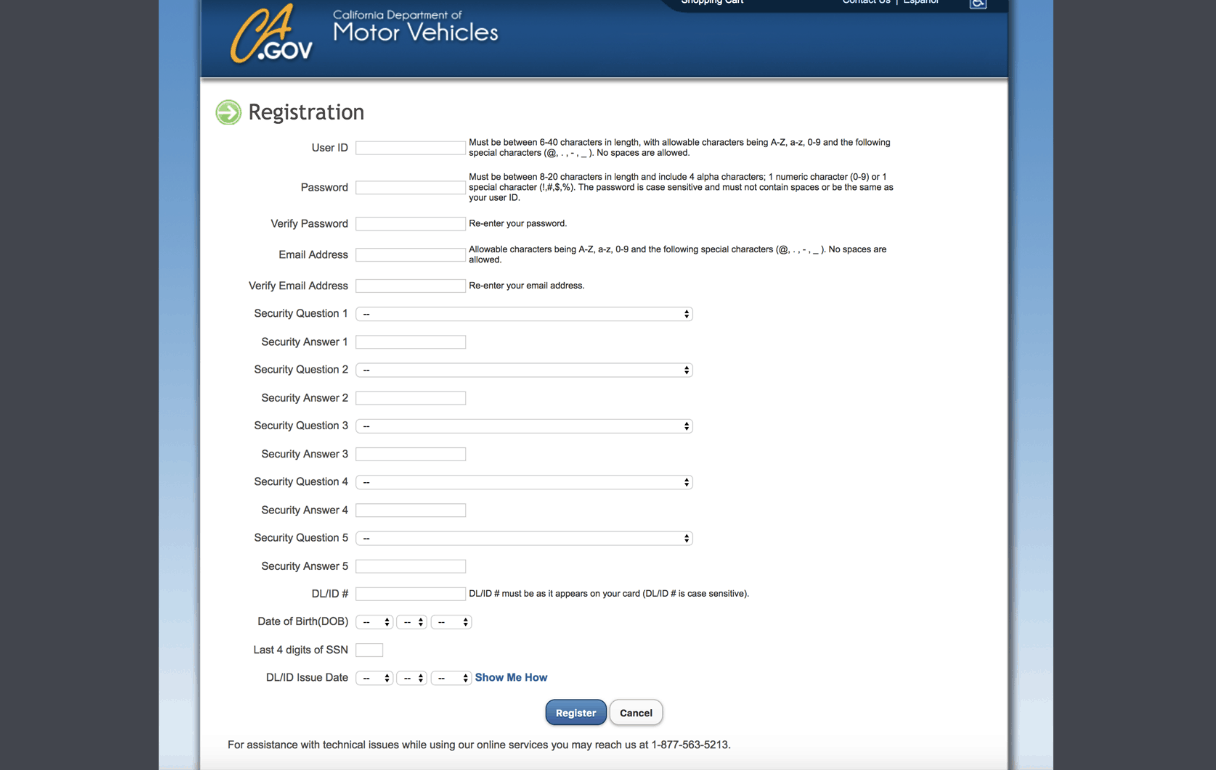
Organizations often try to collect too much information through their forms, even when it’s not needed to complete a transaction.
That’s why there is no shortage of content dedicated to making them easier to complete. There’s an optimal number of fields (it’s something like five), and marketers are generally advised to play with the call-to-action button to inspire more people to take the plunge.
Still, even the best-optimized forms can be annoying. The whole point is to capture information about a lead so you can score, nurture, and design an offer that suits their need.
Users need to enter their information to get information in exchange, and when content like pricing or an ebook is gated behind a form, customers might leave because they don’t know if what’s on the other side is even worth it.
So, many brands are responding by incorporating a more conversational approach into their process with chatbots. Visitors feel like they’re getting more useful information, while businesses can collect more information about that person before marketing to them in the first place.
According to a Salesforce report, customers say they like interacting with chatbots. It’s convenient and people can find quick answers to their questions. And while most of these customers are interacting with bots in a support context, the convenience factor extends to B2B sales, too.
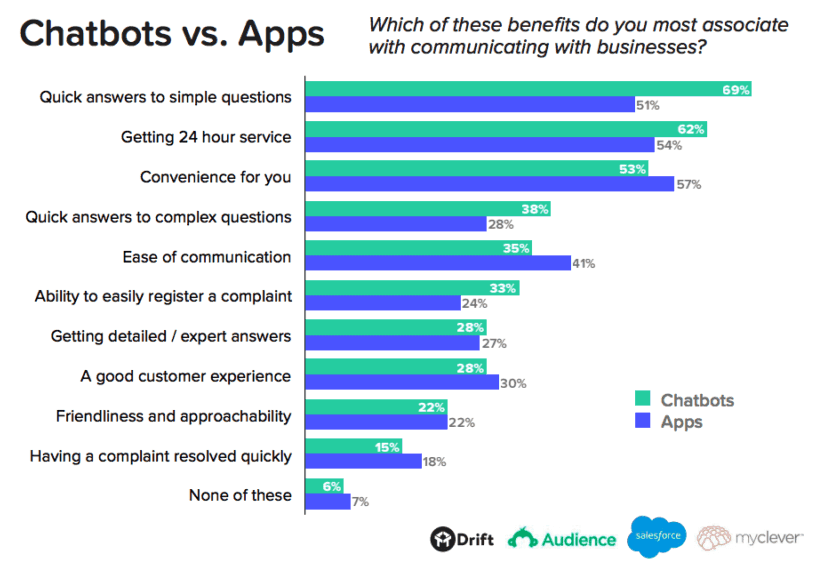
Chatbots Can Be Applied Across Channels
With contact forms, you’ll need to design one specific to each page. A custom landing page for each campaign, each message, each offer.
On your site, a chatbot can be deployed on any page, with the messaging set to reflect the visitor’s path—where did they come from, which pages are they looking at? You can also link chatbots to specific goals and assign them rule-based actions. With Drift, you can tie a goal like “requested demo” to a lead stage and develop your outreach approach from there.
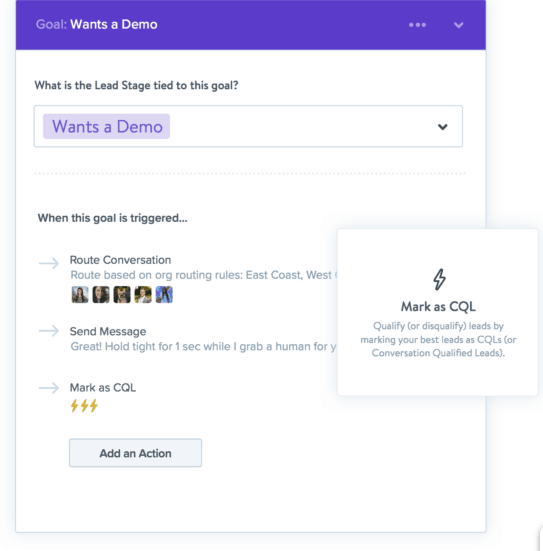
Off the site, you can embed a chat link into your email, reach customers through Facebook Messenger bots, and connect with people on their mobile phones. Businesses no longer need to strategically attract people to a specific page to capture leads or nurture a prospect toward taking the next step.
Conversations Offer More Insights
In this relationship selling, customer-focused, personalization-first landscape, consumer feedback is the holy grail among data. Collecting feedback allows brands to make sure that what they’re offering is in line with customer expectations and if it’s not, they can quickly identify a problem and implement a solution. Before chatbots came on the scene, optimizing your website involved a lot more guesswork.
Lead capture forms don’t uncover mountains of feedback, of course, and you’ll need to read in between the lines to understand how customers feel about the stage in the funnel where that form was presented.
If customers are abandoning the form midway, there’s a problem with the offer, the ask, or both. But, beyond that, there’s no “why.”
Chatbots, on the other hand, capture a broad range of feedback by asking questions. Customers respond, and bots can ask for more details, allowing for more specific and in-depth feedback.
Why is this important? Well, beyond collecting leads, chat transcripts come with a wealth of insights. Here are a few examples:
Are You Attracting the Right Traffic?
What percentage of leads pass the qualification process? If the number seems low, this can reveal a problem with your paid ads, social media, and inbound marketing efforts. Wouldn’t it be nice to know this information before you waste all this time developing nurture campaigns before learning the people getting caught in your funnel shouldn’t be there?
Are People Asking for Things You Don’t Have?
If so, consider offering what people want. If what they want doesn’t quite match your expertise or the rest of your products, think why it is that people keep asking about specific products or features. Your marketing messages might need some adjusting.
What Do People Want to Know About the Items that You Do Offer?
If the questions seem too obvious (you have a product page and everything), consider adjusting your on-page communications so that there’s no question about what you do and don’t provide.
Should I Ditch All of My Forms?
It’s up to you. Our website still has one, tiny form that allows people to sign up for a free Drift account, and we do still ask for an email when new users register with Drift. Email still matters, at least for now, and we realize there is a benefit in marketing to consenting users using email as a channel.
We see a lot of our customers hesitate to do away with forms altogether. And it makes sense. There’s a particular fear associated with getting rid of something (we thought) worked pretty well. But it’s possible to take a hybrid approach until you’re ready to make the switch 100%.
Conversational marketing is a faster way to qualify leads and gather information about prospects, and it does a whole lot more than collect emails and names.
It’s the perfect tool for delivering a better experience to your website visitors and of course, filling your pipeline with qualified leads. But, as we’ve mentioned before, chatbots aren’t going to cannibalize your forms.
Keep your forms, as long as you’d like. You might be surprised to find that you may not need them, after all.






